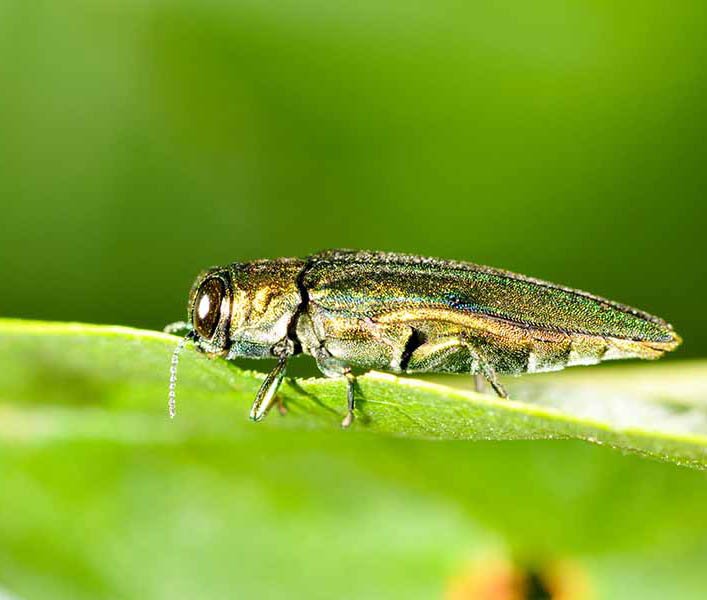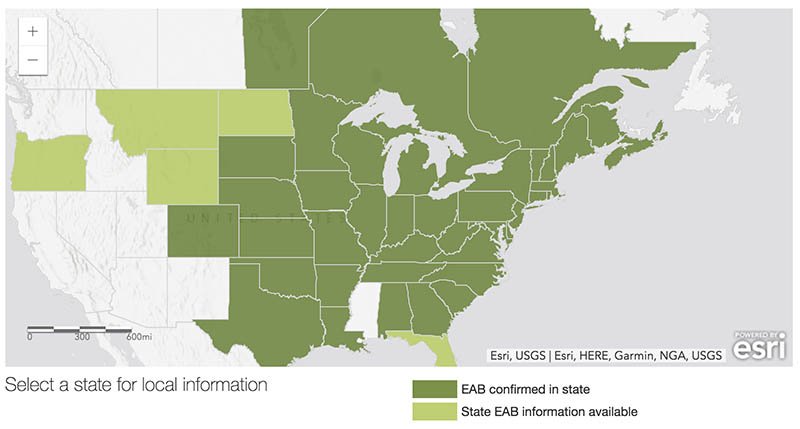In the 1975 cult classic film Monty Python and the Holy Grail, King Arthur and his knights become chafed when, in their quest to find the chalice used by Jesus and his apostles during the Last Supper, a sorcerer tells them that what appears to be a harmless rabbit is instead the blood-thirsty beast guarding the cave where the vessel supposedly is located.
Only when the bunny goes on a killing spree, wiping out many of his men, is Arthur convinced of its destructive and murderous ways.
 No doubt, many felt the same way the first time they learned the tiny and seemingly harmless emerald ash borer made its way into North America almost 20 years ago. Just like the knights in scene 19 of the Holy Grail underestimated the ferocity of what they thought was a benign and innocent rodent, those who doubted the dangers presented by the tiny emerald ash borer are likely having second thoughts. Unfortunately for those dealing with EAB, the pests reproduce like rabbits and there exists no divine hand grenade that can impede them. Just ask folks in Morris County, New Jersey, where the teensy ash borer is threatening what is believed to be the nation’s oldest and largest ash tree that predates the signing of the Declaration of Independence. A tree that has survived since before the American Revolution might not be able to withstand the onslaught of a bug about an inch in length.
No doubt, many felt the same way the first time they learned the tiny and seemingly harmless emerald ash borer made its way into North America almost 20 years ago. Just like the knights in scene 19 of the Holy Grail underestimated the ferocity of what they thought was a benign and innocent rodent, those who doubted the dangers presented by the tiny emerald ash borer are likely having second thoughts. Unfortunately for those dealing with EAB, the pests reproduce like rabbits and there exists no divine hand grenade that can impede them. Just ask folks in Morris County, New Jersey, where the teensy ash borer is threatening what is believed to be the nation’s oldest and largest ash tree that predates the signing of the Declaration of Independence. A tree that has survived since before the American Revolution might not be able to withstand the onslaught of a bug about an inch in length.
Since it came into the port of Detroit as a stowaway in packing materials on a Chinese cargo vessel in 2002, EAB has spread to 35 U.S. states and five provinces in Canada.
Scientists believe that the pest eventually will reach the entire ash tree range in North America, an area that covers parts of at least 42 U.S. states and six Canadian provinces. Each ash borer, however, only flies a few miles throughout its lifecycle, so moving firewood, or not, is critical to controlling its spread.
A series of webinars conducted by scientists and other experts from several states is available on the web site emeraldashborer.info. Webinars cover a range of topics, including how to prevent infestation and what to do after one has occurred. The EAB web site is a news and information portal that is a cooperative effort between Michigan State, Purdue and Ohio State universities, the Michigan and Ohio departments of Agriculture; the Michigan, Indiana and Ohio departments of Natural Resources; the USDA Forest Service; the USDA Animal and Plant Health Inspection Service (APHIS); and the Canadian Food Inspection Agency.
Native to parts of eastern Asia, the EAB borer burrows into ash trees as an adult where it lays its eggs. The larvae feed on the layer beneath the bark, disrupting the tree's vascular system and its ability to take up water and nutrients and eventually kill the tree.
EAB kills ash trees by disrupting the uptake of water and nutrients through the trunk and into the upper reaches of the tree.
Adult females, which grow to about a half-inch in length, create a hole in the bark into which they deposit their eggs. After hatching, the larvae feed on and chew galleries through the tissue beneath the bark layer. In the spring, new adults chew through the bark and emerge leaving behind a D-shaped exit hole before flying into the canopy to feast on ash leaves and begin the reproductive process all over again.
Symptoms of infestation include thinning of the canopy and sprouts growing from holes in the trunk that were created by the pests. Woodpeckers like the larvae, and woodpecker damage might also be a sign of EAB infestation. According to the Ohio Department of Agriculture, canopies of mature ash tree typically are decimated within two years of infestation and the trees dead within five years.
Tree canopies can be wiped out within two years, and mature, healthy trees typically are dead within three to four years. All native North American ash species are susceptible to damage.


